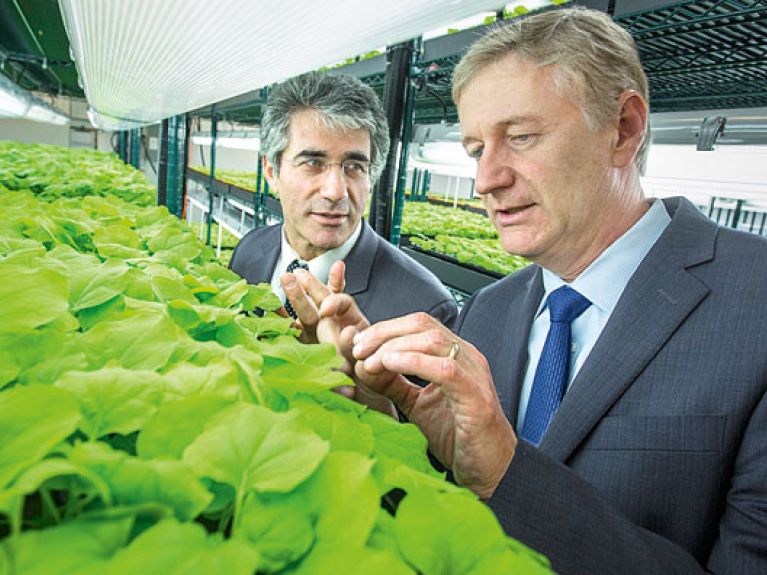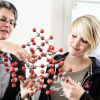Fraunhofer celebrates
The German Fraunhofer-Gesellschaft is driving automation forward in the US.

Andre Sharon was frustrated. He had obtained his PhD in Mechanical Engineering at the world-famous Massachusetts Institute of Technology and worked for several years as a researcher with IT giant IBM. But he found it frustrating that it normally takes such a long time for research results to reach the market. He looked around at different parts of the world, including Japan and Europe. Finally, in Germany he discovered a model that immediately fascinated him: researchers, corporate engineers and students jointly pursuing forward-looking research for the direct benefit of industry and society – it was the Fraunhofer model. “When I returned to MIT in 1991, along with some colleagues I founded the Manufacturing Institute – modelled on the Fraunhofer-Gesellschaft,” says Andre Sharon, now Executive Director of the Fraunhofer Center for Manufacturing Innovation (CMI).
In September 1994, the German Fraunhofer-Gesellschaft launched Fraunhofer USA in North America. It was a bold experiment: “Can a German organisation engaged in applied research be successful in the world’s leading business and research market? When Fraunhofer USA was founded, we weren’t really sure. Today we know: Yes, we can.” That was the conclusion reached by Hans-Jörg Bullinger, then President of the Fraunhofer-Gesellschaft, on Fraunhofer USA’s 15th anniversary. The truth is, the project just kept growing. Today, shortly before its 20th anniversary, Fraunhofer USA boasts nine research centres – from the Fraunhofer Center for Experimental Software Engineering in Maryland to the Fraunhofer Center for Coatings and Laser Applications in Michigan. Each of the American Fraunhofer Centers cooperates closely with at least one of the 66 Fraunhofer Institutes in Germany – as well as with leading U.S. universities like Boston University, Michigan State University, the University of Connecticut and Massachusetts Institute of Technology.
The Fraunhofer CMI, for example, is affiliated with Boston University, where Andre Sharon is professor. One of the Center’s foci is on production engineering in biotechnology and medical technology, two areas that are having problems with automation. “The primary focus of biologists and chemists in their innovation work is on the performance of their products. How these are then mass-produced is something that very few of them think about,” says Sharon. “As a result, many biotechnology products are still manufactured using small laboratory techniques. We want to help automate these processes.”
A project that attracted a lot of attention in the industry was the development of a factory to produce plant-based vaccines. If a pandemic breaks out, there is a sudden need for vaccines. But manufacturing them is a time-consuming process. Researchers have, however, found out that they can biologically program tobacco plants to produce proteins that are suitable for manufacturing vaccines. Working together with the Fraunhofer Center for Molecular Biotechnology (CMB) in Newark, Delaware, Sharon’s team has completely automated the production process. The factory consists of robotic units that sow the seeds, tend the growing plants, program them and harvest them when they are ripe. “The Holy Grail of automation has always been the idea of a factory in which no lighting is needed because absolutely everything is regulated by computer-controlled machines – and that’s exactly what we’ve achieved,” says Sharon. “Only in this case we can’t turn the lights off or the plants will die,” he jokes.
The Fraunhofer-Gesellschaft in the United States has already brought benefits to a whole range of sectors. For example, researchers are developing machines to produce diamonds for the jewellery and electronics industries or 3D printing processes to produce artificial organs. Another focus is energy and resource efficiency. The Fraunhofer Center for Sustainable Energy Systems (CSE) is developing a plug-and-play system for photovoltaic installations. This means that homeowners can configure, easily install and hook up their systems prior to purchase. The system checks if everything is correctly installed and requests permission through the local network to feed in electricity – the answer comes automatically and production can begin. ▪
Boris Hänßler

